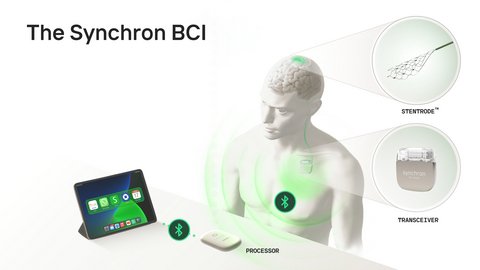
In a world-first, Synchron, a pioneering brain-computer interface (BCI) company, has unveiled a powerful demonstration of thought-based control of an iPad using Apple’s new BCI Human Interface Device (HID) protocol. The public demonstration features Mark, an ALS patient and participant in the company’s COMMAND trial, navigating the iPad using only his neural signals—no hands, voice, or eye movement required.
This milestone was made possible by Synchron’s Stentrode™, an implantable BCI device that captures motor intention signals directly from brain blood vessels. These signals are decoded and seamlessly interpreted by Apple’s iPadOS through Switch Control and the newly released BCI HID protocol.
Dr. Tom Oxley, CEO and Founder of Synchron, described the event as “the first time the world has seen native, thought-driven control of an Apple device in action,” calling it a breakthrough for neural accessibility and human-computer interaction.
By establishing closed-loop communication between brain signals and consumer devices like iPhones, iPads, and Vision Pro, this integration offers real-time screen context and intuitive control—potentially revolutionizing how individuals with motor impairments interact with digital technology.
Mark, now able to read, message, and browse using thought alone, said: “When I lost the use of my hands, I thought I had lost my independence… now I can message my loved ones, read the news, and stay connected—just by thinking.”
Synchron remains the only company to have deployed a permanently implantable BCI via minimally invasive endovascular methods, positioning it as a front-runner in scalable, real-world BCI applications.
First-ever public demo of thought-controlled Apple device using Synchron’s implantable BCI and Apple’s BCI HID protocol.
ALS patient controls iPad using Stentrode™ and Switch Control—no physical input required.
Reflects leap in human-computer interaction, assistive tech, and digital accessibility.